How Punjab moved from bipolar to multi-cornered polls
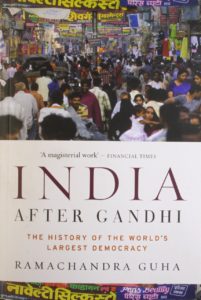 From the NCERT books taught in Indian schools to the work of Ramachandra Guha, to the endless piles of books that UPSC aspirants gorge upon, you will be told that the first non-congress government in independent India was the one elected in 1957 in Kerala and toppled in 1959 by Jawahar Lal Nehru. If anything, it goes on to show how little Punjab figures in the national narrative. Now that the country is seriously watching Punjab, post a stretched out Kisan Andolan and in the midst of election fever, we bring you this highly informative piece by senior journalist IP Singh, who explains this outlier state whose reality challenges the carefully constructed narrative of the Indian state, Delhi-based media, motivated analysts and NCERT books. – Editor, WSN
From the NCERT books taught in Indian schools to the work of Ramachandra Guha, to the endless piles of books that UPSC aspirants gorge upon, you will be told that the first non-congress government in independent India was the one elected in 1957 in Kerala and toppled in 1959 by Jawahar Lal Nehru. If anything, it goes on to show how little Punjab figures in the national narrative. Now that the country is seriously watching Punjab, post a stretched out Kisan Andolan and in the midst of election fever, we bring you this highly informative piece by senior journalist IP Singh, who explains this outlier state whose reality challenges the carefully constructed narrative of the Indian state, Delhi-based media, motivated analysts and NCERT books. – Editor, WSN
![From the NCERT books taught in Indian schools to the work of Ramachandra Guha, to the endless piles of books that UPSC aspirants gorge upon, you will be told that the first non-congress government in independent India was the one elected in 1957 in Kerala and toppled in 1959 by Jawahar Lal Nehru. If anything, it goes on to show how little Punjab figures in the national narrative. Now that the country is seriously watching Punjab, post a stretched out Kisan […]](https://www.theworldsikhnews.com/wp-content/uploads/2022/01/Punjab-CM-360x266.jpg)
PUNJAB, WHICH FACES UNCERTAINTY WITH FIVE-CORNERED assembly elections, has usually remained an outlier to the national trend, especially as seen in the cow-belt states.
Because the roots of Punjab’s different political behaviour are religious and social, its social dynamics, communal and caste issues can’t be seen through the prism of any other state or prisms standardised in Delhi.
Seven decades before Channi: Long before Charanjit Singh Channi became its first scheduled caste Sikh chief minister, the state had its first leader of opposition in an illustrious SC Sikh, Gopal Singh Khalsa, whom then Shiromani Akali Dal president Master Tara Singh picked for the post after the first election in free India in 1952. His acceptance was also seamless.
When the rest of the country largely cites Mahatma Gandhi’s peaceful methods, the Sikh peasantry, which made the core of farmers’ recent peaceful stir, has examples of Akali agitations of the early 1920s – Guru ka Bagh and Jaito – which hit international headlines in those times and still remain unparalleled.
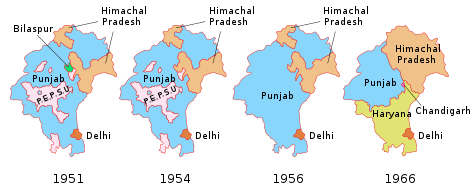
Patiala and East Punjab States Union, which was later merged into Punjab, had the first Akali Dal-led non-Congress government in the country. This was also the first assembly to be dissolved by Jawahar Lal Nehru’s government and PEPSU was placed under President’s Rule in 1953.
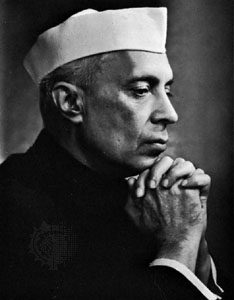 Soon after, when Nehru in the last week of December 1953 came to address a religious congregation at the historic shrine of Fatehgarh Sahib, to mark the martyrdom of two younger sons of Guru Gobind Singh, he was not allowed to deliver a speech after paying obeisance.
Soon after, when Nehru in the last week of December 1953 came to address a religious congregation at the historic shrine of Fatehgarh Sahib, to mark the martyrdom of two younger sons of Guru Gobind Singh, he was not allowed to deliver a speech after paying obeisance.
 Much later, one of the strongest mass oppositions to the Emergency imposed by Indira Gandhi also came from Punjab. Congress remained out of power in Punjab when Rajiv Gandhi headed the government at the Centre with the largest-ever mandate.
Much later, one of the strongest mass oppositions to the Emergency imposed by Indira Gandhi also came from Punjab. Congress remained out of power in Punjab when Rajiv Gandhi headed the government at the Centre with the largest-ever mandate.
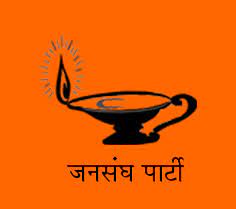 Like other states, Punjab has also had two prominent parties, SAD and Congress, which won alternatively more or less, and BJP, or its earlier avatar Jan Sangh, Janata Party, and communist parties remained smaller players and had alliances with SAD at different times.
Like other states, Punjab has also had two prominent parties, SAD and Congress, which won alternatively more or less, and BJP, or its earlier avatar Jan Sangh, Janata Party, and communist parties remained smaller players and had alliances with SAD at different times.
When Sikhs had almost completely dumped Congress and rallied behind SAD, Parkash Singh Badal completed his familial control not only on the party but also on Shiromani Gurdwara Parbandhak Committee and by implication on Akal Takht, the highest temporal seat of Sikhs. This had its negative impact and Congress bounced back in the 1999 parliamentary polls and in the 2002 assembly elections.
After the cataclysmic events of 1984, Congress remained highly unpopular in the state. It lost the 1985 assembly elections and the defeats were humiliating in the
parliamentary elections of 1989, 1996 and 1998 – in 1998 it was reduced to zero. In the 1997 assembly election, the grand old party got just 14 seats in an assembly of 117 seats.
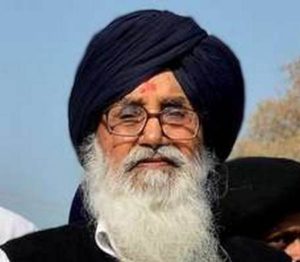 When Sikhs had almost completely dumped Congress and rallied behind SAD, Parkash Singh Badal completed his familial control not only on the party but also on Shiromani Gurdwara Parbandhak Committee and by implication on Akal Takht, the highest temporal seat of Sikhs. This had its negative impact and Congress bounced back in the 1999 parliamentary polls and in the 2002 assembly elections.
When Sikhs had almost completely dumped Congress and rallied behind SAD, Parkash Singh Badal completed his familial control not only on the party but also on Shiromani Gurdwara Parbandhak Committee and by implication on Akal Takht, the highest temporal seat of Sikhs. This had its negative impact and Congress bounced back in the 1999 parliamentary polls and in the 2002 assembly elections.
In 2012, the SAD-BJP combine scripted history by winning a consecutive term, senior Badal’s fifth as the CM. However, during this tenure, SAD lost a considerable share of its constituency, the Sikhs.
Punjab has been looking for a third alternative for around eight years now, initial signs of which came in the 2012 assembly elections.
Punjab has been looking for a third alternative for around eight years now, initial signs of which came in the 2012 assembly elections. It was a surprise for AAP when its candidates won four seats in the 2014 Lok Sabha polls. Issues of sacrilege of Guru Granth Sahib and police firing in which two Sikh protesters were killed in 2015 led to an increase in the unpopularity of SAD.
But after AAP started micromanaging things from Delhi, its vote share slipped in the 2017 assembly and 2019 parliamentary elections and Congress gained from Sikhs’ disenchantment with SAD. In 2019, AAP could get only 7.38% vote share while a ‘fourth alternative’ of Punjab Democratic Alliance plus BSP got 10.77 % vote share. This collective vote share of 18% still reflected that quest for change to a third alternative.
But after AAP started micromanaging things from Delhi, its vote share slipped in the 2017 assembly and 2019 parliamentary elections and Congress gained from Sikhs’ disenchantment with SAD.
It is amid this political fluidity, mainly caused by the weakening of Akali Dal and serious issues of governance, the emergence of mafias, corruption for which Congress too faced flak, that Punjab has space for a third alternative. In other states, BJP gained space largely vacated by Congress but in Punjab, Congress is still holding considerable ground and the saffron party will find it extremely difficult to gain hold in any ‘Sikh space’, which was also apparent from Punjab ducking the Modi wave in 2014, when even a stalwart like Arun Jaitley lost from Amritsar, and in 2019.
BJP still remains a smaller player even as it is trying to project itself as a ‘virat’ (big) party.
This is precisely the reason that BJP still remains a smaller player even as it is trying to project itself as a ‘virat’ (big) party.
Farm movement increased this fluidity and now farm groups have also announced their decision to contest elections. They have also already started strongly attacking AAP, which has now announced Bhagwant Singh Mann as its CM candidate. During the farm movement, there was enough expression of hope that farm groups would play some role in the fluid political situation in Punjab even as no one was clear about the method.
 The author is a senior journalist. The article appears here courtesy TOI. The author blogs at https://timesofindia.indiatimes.com/blogs/author/ipsingh/
The author is a senior journalist. The article appears here courtesy TOI. The author blogs at https://timesofindia.indiatimes.com/blogs/author/ipsingh/
